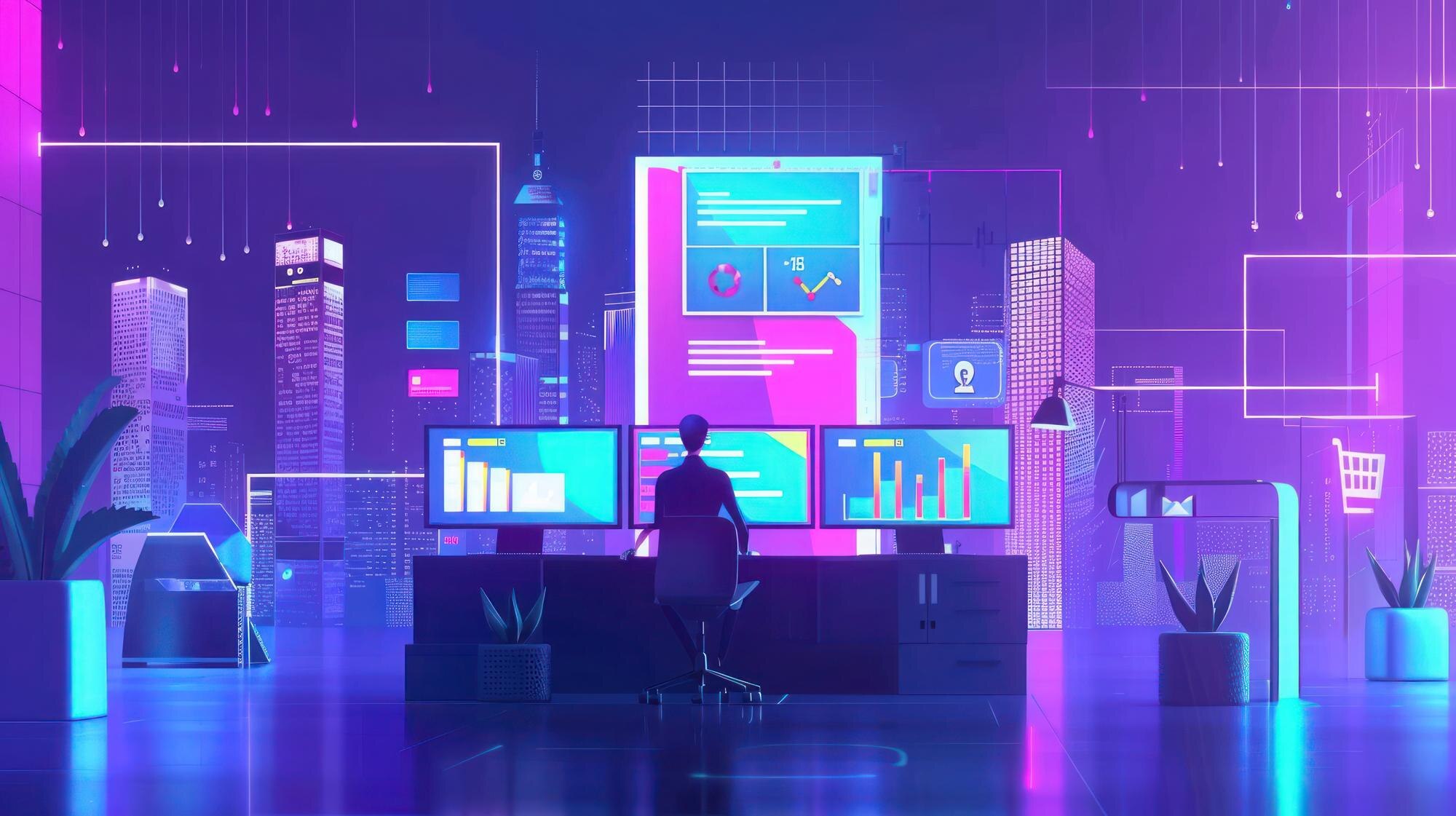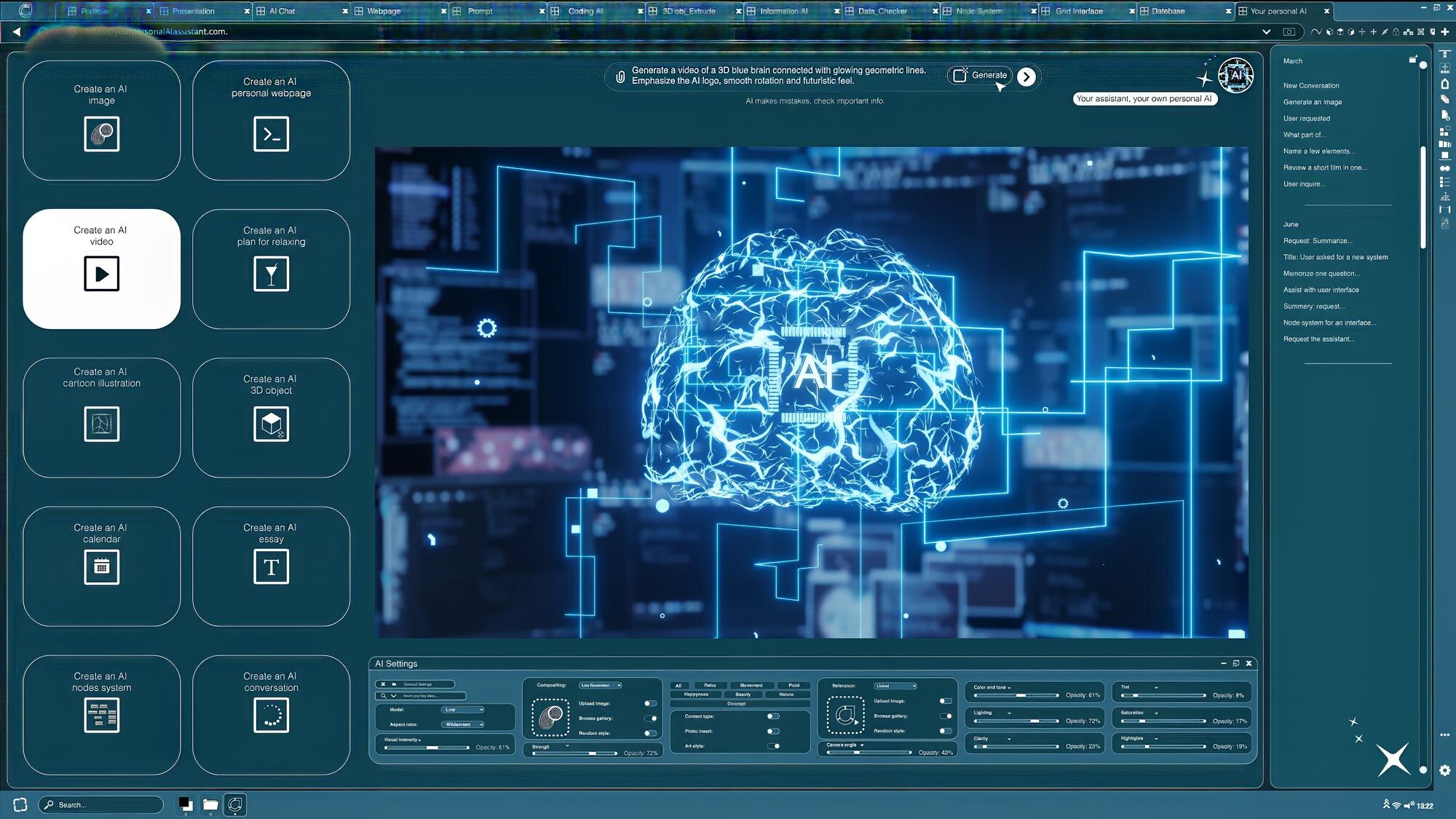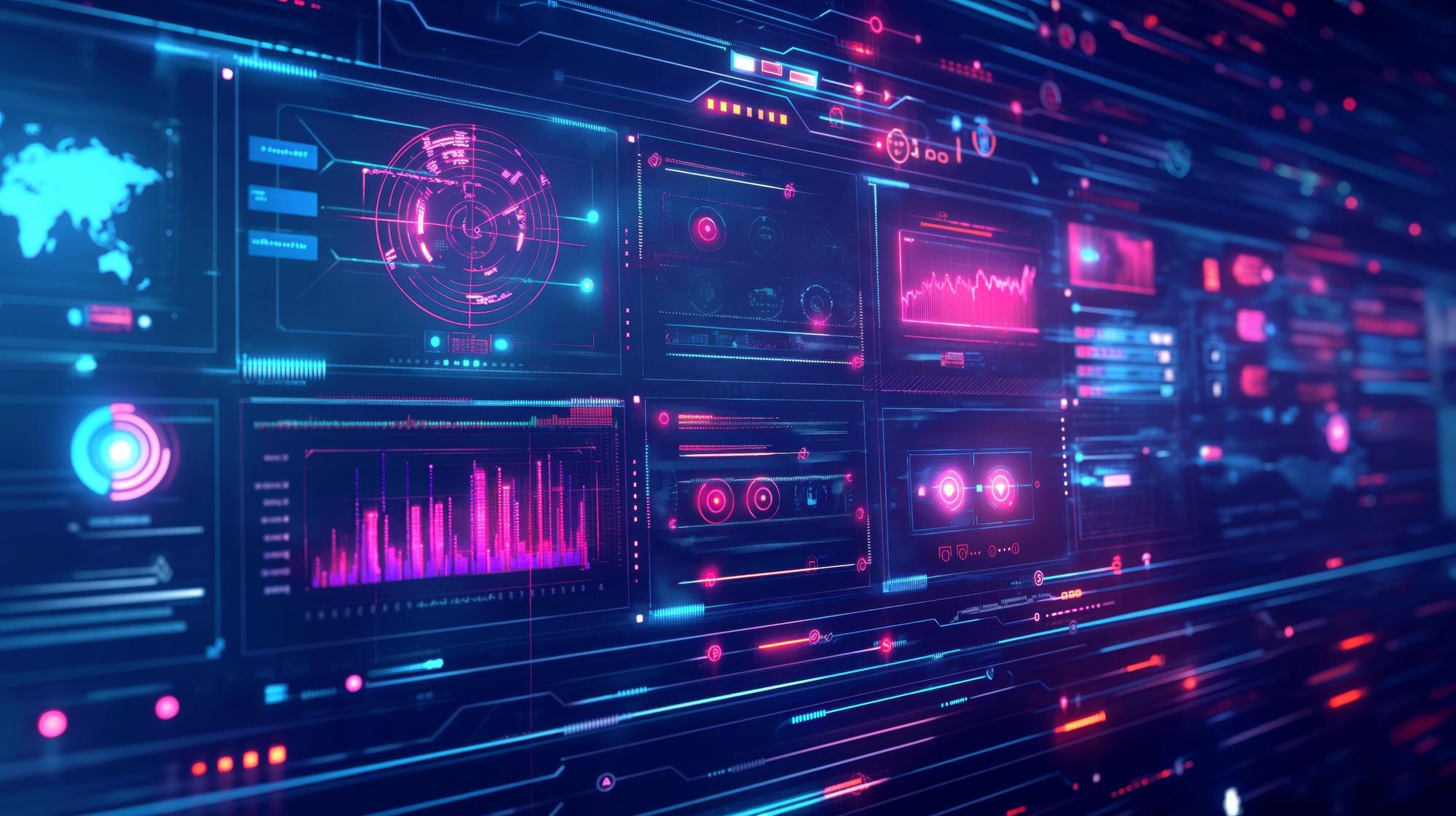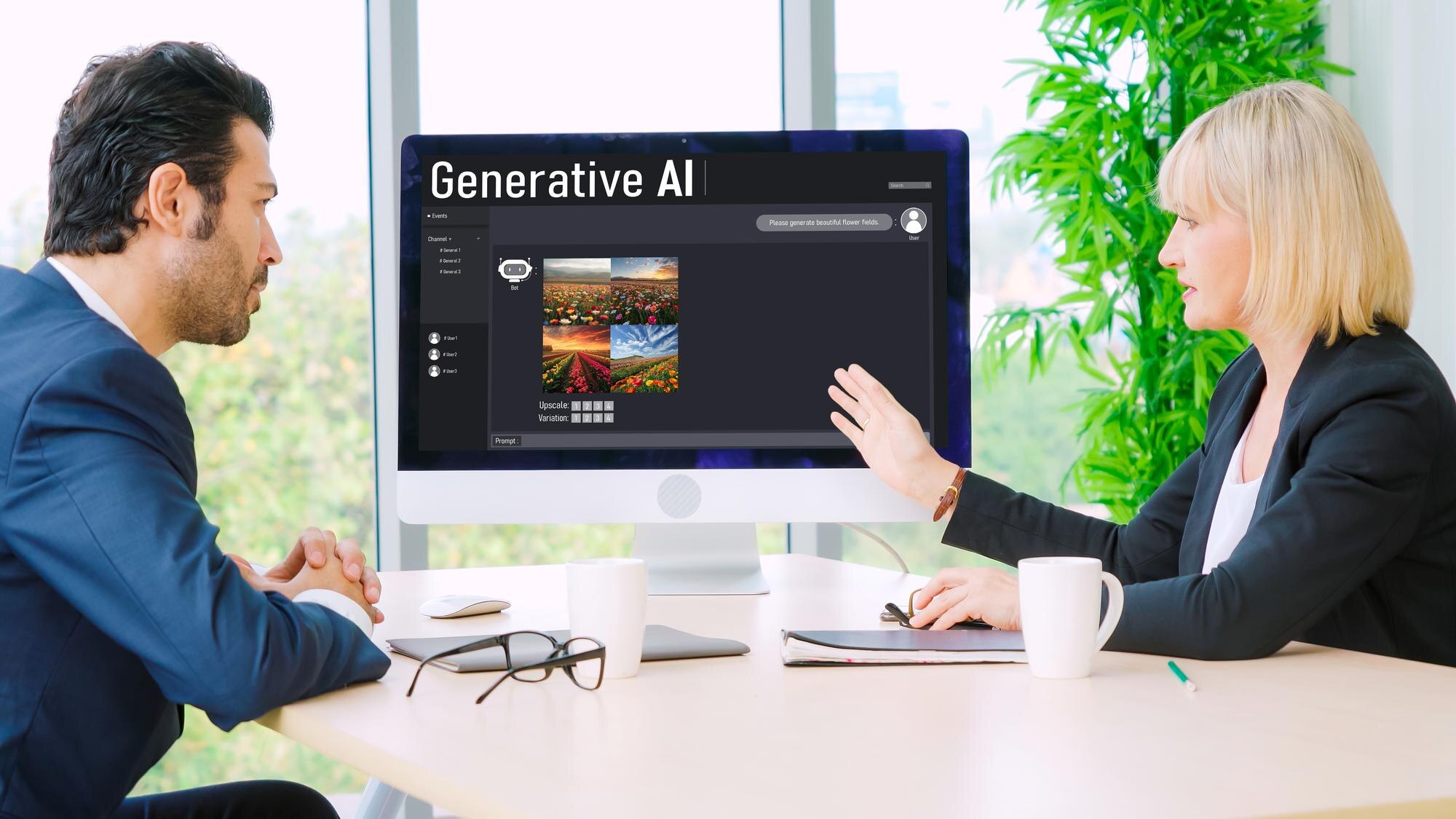AI Web Design Impact
AI-Driven Web Design: Balancing Human Creativity and Machine Power
In an era where technology is rapidly advancing, AI-driven web design is taking center stage, merging machine capabilities with human ingenuity. As we approach 2025, businesses are keen to understand how AI can reshape their digital presence, impacting SEO, user experience, and accessibility. This blog post will explore the role of AI in creating intelligent, adaptive design systems that go beyond traditional templates, offering personalized experiences that engage each visitor uniquely. With AI’s growing influence in web design, companies stand at the forefront of a new digital frontier, where machine power complements rather than replaces human creativity. Join us as we delve into the practical ways AI can enhance your website’s performance and future-proof your business strategy. The Rise of AI in Web Design

AI is transforming web design, moving beyond static templates to create dynamic, intelligent systems. This section examines how AI is changing the digital design landscape.
Beyond Templates: Intelligent Design
AI in web design is pushing the boundaries of creativity and functionality. Gone are the days of rigid templates that limit design possibilities. Instead, AI-powered systems are creating flexible, adaptive layouts that respond to user behavior and preferences.
These intelligent design systems analyze user data, including browsing history, device type, and interaction patterns, to provide personalized recommendations. They then use this information to generate unique layouts tailored to each visitor.
The result is a more engaging and personalized web experience that can significantly improve user satisfaction and conversion rates. This trend is expected to continue growing, with AI becoming an integral part of the web design process.
AI-Driven Layouts and Testing
AI is revolutionizing the way we approach layout design and testing. Machine learning algorithms can now generate multiple layout variations based on design principles and user data.
These AI-generated layouts are then subjected to automated A/B testing. The system tracks user engagement metrics across different versions, continuously refining the design based on real-world performance.
This iterative process enables rapid optimization, ensuring that websites consistently present their best face to visitors. It’s a data-driven approach that eliminates the guesswork from design decisions.
Predictive UX in Action
Predictive UX is another exciting application of AI in web design. By analyzing vast amounts of user data, AI can anticipate user needs and preferences, creating a more intuitive browsing experience.
For example, an e-commerce site might use predictive UX to:
-
Reorder navigation menus based on likely user intent
-
Suggest products before the user even starts searching
-
Adjust page load priorities to match predicted user behavior
This proactive approach to UX design can significantly reduce friction in the user journey, leading to higher engagement and conversion rates.
Personalization at Scale

AI enables websites to offer personalized experiences to each visitor, adapting content and design in real-time. This section delves into the mechanics and benefits of AI-driven personalization.
Real-Time Visitor Tailoring
AI-powered personalization takes user experience to new heights by tailoring website content and design in real-time. This technology analyzes visitor behavior as they navigate the site, making instant adjustments to maximize engagement.
The system considers factors such as:
-
Geographic location
-
Device type
-
Time of day
-
Previous interactions with the site
Based on these inputs, the AI can modify everything from the layout and color scheme to the content and calls-to-action displayed to each user.
This level of personalization creates a unique experience for every visitor, increasing the likelihood of conversions and customer satisfaction.
Smart Content and Dynamic Recommendations
AI-driven personalization goes beyond just adjusting layouts. It also powers smart content delivery and dynamic recommendations that can significantly enhance user engagement.
Innovative content systems use machine learning to analyze user preferences and behavior patterns. They then serve up content that is most likely to resonate with each visitor.
Dynamic recommendations take this a step further by suggesting products, articles, or services based on the user’s browsing history and real-time behavior. This can include:
-
Related products in e-commerce
-
Personalized content recommendations on media sites
-
Tailored service offerings on B2B platforms
By presenting users with relevant content and recommendations, businesses can increase time on site, reduce bounce rates, and improve conversion rates.
AI + SEO: Smarter Search Optimization

AI is transforming the world of SEO, helping websites adapt to increasingly sophisticated search algorithms. This section explores how AI is shaping the future of search optimization.
Navigating Google’s Evolving Algorithms
Google’s search algorithms are becoming more complex, with a focus on understanding user intent and delivering high-quality, relevant content. AI is proving invaluable in helping websites keep pace with these changes.
AI-powered SEO tools can:
-
Analyze search trends and predict algorithm updates
-
Identify content gaps and opportunities
-
Optimize on-page elements in real-time
By leveraging AI, websites can stay ahead of algorithm changes, ensuring consistent visibility in search results.
This proactive approach to SEO is crucial in a landscape where search engine preferences can shift rapidly. AI provides the agility needed to adapt quickly and maintain strong search rankings.
Semantic Search and Content Creation
Semantic search is changing how search engines understand and rank content. AI is at the forefront of this shift, helping websites create more meaningful and contextually relevant content.
AI-powered content creation tools can:
-
Generate topic ideas based on search trends
-
Suggest relevant keywords and phrases
-
Analyze content for semantic relevance and completeness
These tools help ensure that content not only includes the right keywords but also provides comprehensive coverage of a topic. This aligns with search engines’ increasing focus on content depth and quality.
By embracing AI in content creation, websites can produce more valuable, search-engine-friendly content that resonates with both users and algorithms.
Preparing for Voice Search
Voice search is rapidly gaining popularity, and AI is crucial in optimizing websites for this new paradigm. Voice queries often differ significantly from typed searches, requiring a different approach to SEO.
AI can help by:
-
Analyzing voice search patterns and trends
-
Identifying long-tail keywords common in voice queries
-
Optimizing content for natural language processing
Websites that leverage AI to prepare for voice search will be well-positioned to capture this growing segment of search traffic. This forward-thinking approach can provide a significant competitive advantage in the evolving search landscape.
Accessibility and Inclusivity

AI is playing a crucial role in making websites more accessible and inclusive. This section explores how AI is helping websites meet accessibility standards and reach broader audiences.
Meeting WCAG Standards Automatically
Web Content Accessibility Guidelines (WCAG) are essential for ensuring that websites are accessible to people with diverse abilities. AI is making it easier than ever to meet these standards automatically.
AI-powered accessibility tools can:
-
Scan websites for potential accessibility issues
-
Suggest improvements to meet WCAG standards
-
Automatically adjust content for better readability
These tools can identify problems that human reviewers, such as insufficient color contrast or missing alt text for images, might miss. By automating much of the accessibility compliance process, AI helps ensure that websites are inclusive by design.
This not only improves user experience for people with disabilities but also helps businesses avoid potential legal issues related to accessibility.
Benefits of Broader Audience Reach
By enhancing accessibility, AI enables websites to reach a broader audience. This inclusivity can yield significant benefits for both businesses and users.
For businesses, the advantages include:
-
Increased market reach
-
Improved brand reputation
-
Higher user engagement and satisfaction
For users, accessible websites mean:
-
Better online experiences regardless of ability
-
Increased independence in digital interactions
-
More equitable access to information and services
AI-driven accessibility is not just about compliance—it’s about creating a more inclusive digital world that benefits everyone.
Human Creativity + AI Power

While AI is transforming web design, human creativity remains essential. This section explores how AI and human designers can work together to create exceptional digital experiences.
AI as a Collaborative Partner
AI is not replacing human designers but rather augmenting their capabilities. By handling repetitive tasks and data analysis, AI frees up designers to focus on higher-level creative work.
AI can assist designers by:
-
Generating initial design concepts
-
Providing data-driven insights on user preferences
-
Automating routine design tasks
This collaboration between AI and human designers leads to more efficient workflows and better outcomes. Designers can leverage AI’s analytical power while applying their own creative vision and problem-solving skills.
The result is a synergy that combines the best of both worlds: AI’s data processing capabilities and human intuition and creativity.
The Role of Designers in Storytelling
While AI excels at data analysis and optimization, human designers remain crucial for storytelling and brand communication. Designers bring a unique perspective that AI cannot replicate.
Designers contribute by:
-
Crafting compelling visual narratives
-
Infusing designs with emotion and brand personality
-
Creating unique, memorable user experiences
The elements are crucial for establishing robust identities and cultivating emotional connections with users. AI can support these efforts, but the core creative vision comes from human designers.
By focusing on these high-value creative tasks, designers can elevate their work and create truly impactful digital experiences.
Action Steps for Businesses in 2025

As AI continues to transform web design, businesses must adapt to stay competitive. This section outlines practical steps companies can take to leverage AI in their web design strategies.
Quick Wins with AI Tools
Businesses can start benefiting from AI in web design quickly by implementing readily available tools. These solutions offer immediate improvements without requiring a complete overhaul of existing systems.
Some quick wins include:
-
Implementing AI-powered chatbots for customer service
-
Using AI heatmaps to analyze user behavior
-
Adopting innovative analytics tools for data-driven decision making
These tools can provide valuable insights and enhance user experience with minimal setup time. They offer a low-risk way to start exploring the benefits of AI in web design.
By starting with these quick wins, businesses can build momentum and gain experience with AI technologies before moving on to more comprehensive implementations.
Long-Term AI-First Design Systems
For long-term success, businesses should consider adopting AI-first design systems. This approach involves integrating AI deeply into the design process from the ground up.
Steps to implement an AI-first design system include:
-
Assessing current design processes and identifying AI integration points
-
Investing in AI-powered design tools and platforms
-
Training design teams on AI technologies and best practices
-
Developing AI-driven personalization and optimization strategies
This long-term approach requires more investment but can lead to significant competitive advantages. AI-first design systems can adapt more quickly to user needs and market changes, ensuring that websites remain practical and relevant over time.
By embracing AI as a core part of their web design strategy, businesses can position themselves at the forefront of digital innovation.












